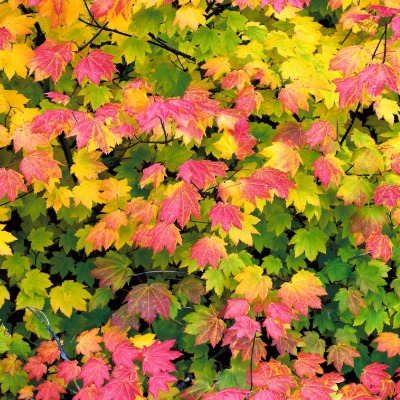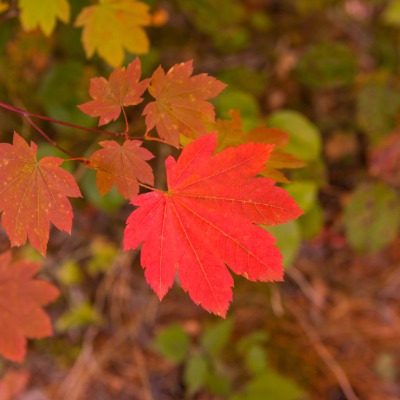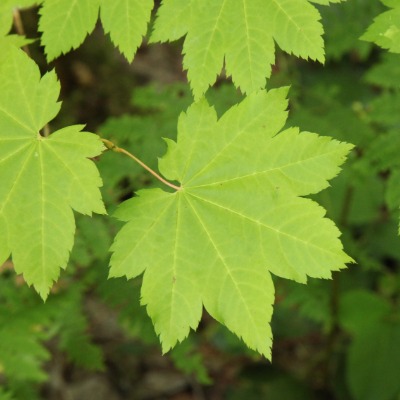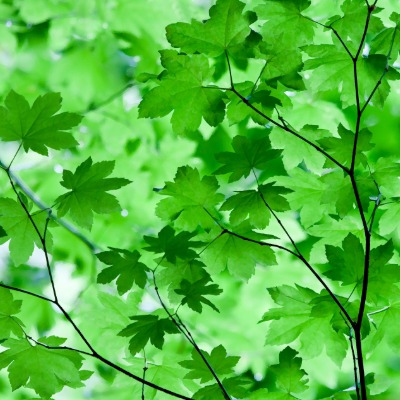SMALL TREES TO PLANT
COMMERCIAL LANDSCAPE MANAGEMENT - SERVICING MARYLAND, DC, AND VIRGINIA
PLANTING SMALL TREES
These are trees that grow under 30 feet, perfect for foundation plantings, where they enhance and soften the lines of structures, in mixed borders, where they add to a layered effect and diversity, or as ornamental features, adding beauty and color throughout the seasons with their foliage and blooms. Specimen trees, even at a smaller scale, can act as focal points within a landscape. Their manageable size makes them suitable for urban environments where space is limited, allowing for effective use in parks, patios, and along sidewalks while minimizing the risk of causing damage to nearby structures or utilities.

The American Hornbeam leaves are ovate to elliptical, with serrated edges and a glossy surface that transitions into dark green in summer to vibrant hues of yellow and orange in the fall. It features a dense, outwardly branching structure, creating a well-defined, spreading canopy. Its bark is smooth and grayish-blue when young, developing a more sculptural appearance with age. In spring, it displays its delicate catkins, while its leaves come alive in the summer with a lush, dark green hue. As autumn approaches, the foliage transforms into vibrant shades of yellow, orange, and scarlet red. Used as a specimen tree in parks or gardens, woodland edges, and in hedges to create natural privacy screens.
TYPE
deciduous
HEIGHT
20 - 30 feet
SUN
part sun / shade
SOIL
dry / moist / wet
PURPOSE
ornamental and ecological

The American Plum produces delicate white blossoms in the spring, which emerge before the leaves, creating a picturesque scene that heralds the arrival of warmer weather. The small, ovate, and serrated leaves turn vibrant greens in the summer and transition into bronze in the fall. The bark is dark brown and rough, and its trunk grows upright with an outward branching pattern that allows for ample sunlight to reach the inner leaves. The fruit is small, with skin often yellow and turning red or purple when ripe. Its flesh is juicy and aromatic with a slight tart and sweet flavor, making it a favorite for jams and jellies. The tree is valued by its ability to stabilize soil and prevent erosion with its extensive root system, making it ideal for slopes, banks, and gullies.
TYPE
deciduous
HEIGHT
15 - 25 feet
SUN
full sun / part sun
SOIL
moist / dry
PURPOSE
ornamental and ecological

The Chickasaw plum features glossy, dark green leaves that turn vibrant shades of yellow and red in the fall. The bark has a distinctive reddish-brown hue and furrowed texture with thorn-like branches. Its branches tend to grow outward, creating a broad, rounded canopy. In early spring, this tree bursts into bloom with delicate white blossoms that attract pollinators and enhance curb appeal. In summer, it produces small, round fruits that are yellow to red in color, harvested for jams, jellies, and other culinary uses. It is an excellent specimen tree or addition to spaces with beautiful and functional greenery.
TYPE
deciduous
HEIGHT
12 feet
SUN
full sun / part sun
SOIL
dry
PURPOSE
ornamental and ecological

The Crab Apple leaves are small, oval-shaped, with serrated edges. The bark is gray to brown and often features small lenticels that allow for gas exchange. Its branches tend to grow outward, creating a wide spread and a rounded canopy. When planted under full sun, the trees produce bountiful small red apples often dappled with speckles or stripes of yellow, the hues deepening as they ripen in the fall. It blossoms in vibrant pink and white in the spring, followed by green foliage in the summer, and transitions to brilliant hues of yellow, orange, and red in the fall. They serve as beautiful hedges providing privacy or as foundation plantings framing structures, or in orchard plantings where they yield fruits.
TYPE
deciduous
HEIGHT
15 - 25 feet
SUN
full sun
SOIL
sandy / loamy
PURPOSE
ornamental and ecological

The Redbud Tree's heart-shaped leaves emerge from red colored buds and exhibit a vibrant green hue transitioning to a striking yellow in the fall. It features a smooth, grayish-brown bark that becomes furrowed with age. The limbs grow outward and upward, creating a wide, rounded canopy. It is notable for its vibrant pink pea-shaped flowers that bloom in early spring before the leaves emerge. After flowering, small, flat, edible pods that contain seeds hang from the branches. The foliage transitions from lush green to shades of yellow and orange in the fall. The trees improve soil health through their nitrogen-fixing abilities, enhancing nutrient availability for other plants, apart from being beautiful focal points in landscapes.
TYPE
deciduous
HEIGHT
20 - 30 feet
SUN
full sun / partial shade
SOIL
moist / wet
PURPOSE
ornamental and ecological

The Green Hawthorn features a heart-shaped leaf shape that is both lobed and serrated. The vibrant green foliage forms a well-defined vase-shaped canopy with its spreading branches. The leaves maintain their rich green hue in the summer and transform into a spectacle of warm colors before developing into a deep scarlet red. The delicate white to pale pink flowers bloom in spring, until they produce small, bright red berries that serve as a food source for various birds and wildlife. Its dense foliage and thorny branches can create natural barriers, enhancing privacy and security in residential areas, but thornless and smaller varieties are available.
TYPE
deciduous
HEIGHT
10 - 25 feet
SUN
full sun / partial shade
SOIL
well drained / loamy
PURPOSE
ornamental and ecological

The Japanese Maple has palmate and finely dissected leaves that exhibit vibrant colors throughout the seasons. The bark has a striking reddish or purplish hue while the trunk, typically slender and gracefully contorted, supports the intricate branching patterns forming an irregularly split canopy. The tree produces small flowers that bloom in early spring, followed by winged seeds known as samaras, which are dispersed by the wind. The flowers are followed by vibrant, soft green foliage in the spring and transition to deep crimson in the fall. Cultivated for its exquisite foliage and delicate branching structure, it provides a beautiful focal point that harmonizes beautifully with other elements of a zen garden, rock garden, water features, and retreats.
TYPE
deciduous
HEIGHT
10 - 25 feet
SUN
partial shade / shade
SOIL
well drained / slightly acidic
PURPOSE
ornamental and ecological

The Paperbark Maple leaves are trifoliate, with each leaf consisting of three distinct lobes that transform into vibrant hues of orange, red, and yellow in the fall. The tree is notable for its exfoliating bark, which peels away in thin, papery strips, revealing a rich, cinnamon-brown underlayer. Its branches grow upwards and form an oval and rounded canopy. It produces small, inconspicuous flowers in the spring that give way to paired winged fruits containing seeds. It displays vibrant hues of green in spring and summer, followed by striking yellows, oranges, and crimson in autumn. The peeling bark of the tree makes it generally pest and disease-resistant, and the leaves offer a dynamic visual experience, drawing attention and elevating landscape designs as accent plantings.
TYPE
deciduous
HEIGHT
15 - 25 feet
SUN
full sun / partial shade
SOIL
well drained / loamy
PURPOSE
ornamental and ecological

The PawPaw tree leaves are broad and have a smooth texture with a layered branching pattern. The trunk displays a robust and upright form, providing a strong central support for the branches that extend outward. In the fall, the foliage transforms and displays a range of yellow to orange hues before shedding its leaves for the winter. This tree produces large, greenish-yellow fruits that can reach up to six inches in length. The flesh of the fruit is edible with a creamy and rich texture, resembling bananas or mangoes, making it suitable for desserts and smoothies. The fruits that are rich in nutrients provide a food source for local wildlife and support the biodiversity of the area. It is naturally deer and rabbit-resistant and can be used as an understory specimen tree.
TYPE
deciduous
HEIGHT
15 - 30 feet
SUN
full sun / part sun / shade
SOIL
moist / wet
PURPOSE
ornamental and ecological

Serviceberries feature oval-shaped leaves that change from a vibrant green in spring to a striking yellow and red in the fall. The bark is gray and smooth, and the branches are open and spread outwards, allowing for ample light filtration and air circulation. It produces white flowers in early spring and bears small, sweet, edible berries that can be harvested in late spring to early summer. These berries are often used in jams, jellies, and desserts, and are a food source for birds and other wildlife. They are valued as a specimen ornamental tree for their wonderful seasonal fall colors of vibrant shades of yellow, orange, and red.
TYPE
deciduous
HEIGHT
15 - 25 feet
SUN
full sun / partial sun / shade
SOIL
moist / dry
PURPOSE
ornamental and ecological

The Star Magnolia leaves are ovate, glossy, and glabrous with a deep green color. It has a beautiful, bushy form with leaves growing relatively low to the ground. It captivates with its exquisite, star-shaped flowers that bloom in early spring before the leaves emerge. The flowers feature delicate petals that range from pristine white to soft pink and exude a subtle, sweet fragrance. The flowers are followed by lush green foliage that transforms into vibrant shades of yellow and orange in the fall. This ethereal tree serves as an effective screening plant, with its bushy form creating a natural barrier alongside other plantings, suitable for a mixed border arrangement and various settings.
TYPE
deciduous
HEIGHT
15 - 20 feet
SUN
full sun / partial shade
SOIL
well drained / loamy
PURPOSE
ornamental and ecological

The Vine Maple leaves are typically palmate, with lobes that radiate from a central point, giving them a delicate, hand-like appearance. The bark is olive green, and the trunk is multi-stemmed, creating a bushy appearance. The branches form an open canopy shape, allowing for dappled sunlight to filter through. It produces red and white trumpet-shaped flowers, followed by red winged fruits called samaras. The fresh foliage emerges in spring and transitions to a rich, deep green in summer. In autumn, the leaves transform into a tapestry of red, orange, and yellow. Its graceful, arching branches and vibrant foliage provide a beautiful backdrop for building foundations or structures that require a seamless transition from hardscape to softscape.
TYPE
deciduous
HEIGHT
15 - 25 feet
SUN
full sun / partial shade
SOIL
well drained / loamy
PURPOSE
ornamental and ecological

Smooth Alder trees have broad, elliptical leaves with a dark green color that turn yellow in the fall. It has a smooth, grayish bark and a fine, multi-stemmed branching structure that forms a rounded canopy like a shrub. It produces small green or yellow flowers, known as catkins, which appear in early spring before the leaves fully emerge. The flowers develop into small, woody cones that contain seeds, which can provide food for wildlife. The cones and catkins remain on the branches in winter even after shedding their leaves. Usually planted in even spaces, it enhances the soil quality by fixing nitrogen, which enriches the surrounding environment and supports the growth of other plants. Its ability to tolerate wet soils and damaged conditions makes it an ideal choice for areas prone to flooding or near water bodies to stabilize stream banks, gullies, and erosion-prone areas.
TYPE
deciduous
HEIGHT
8 - 15 feet
SUN
full sun / part sun
SOIL
moist / wet
PURPOSE
ornamental and ecological
Ready to discuss your vision?
Let's schedule a consultation!




















































































































































